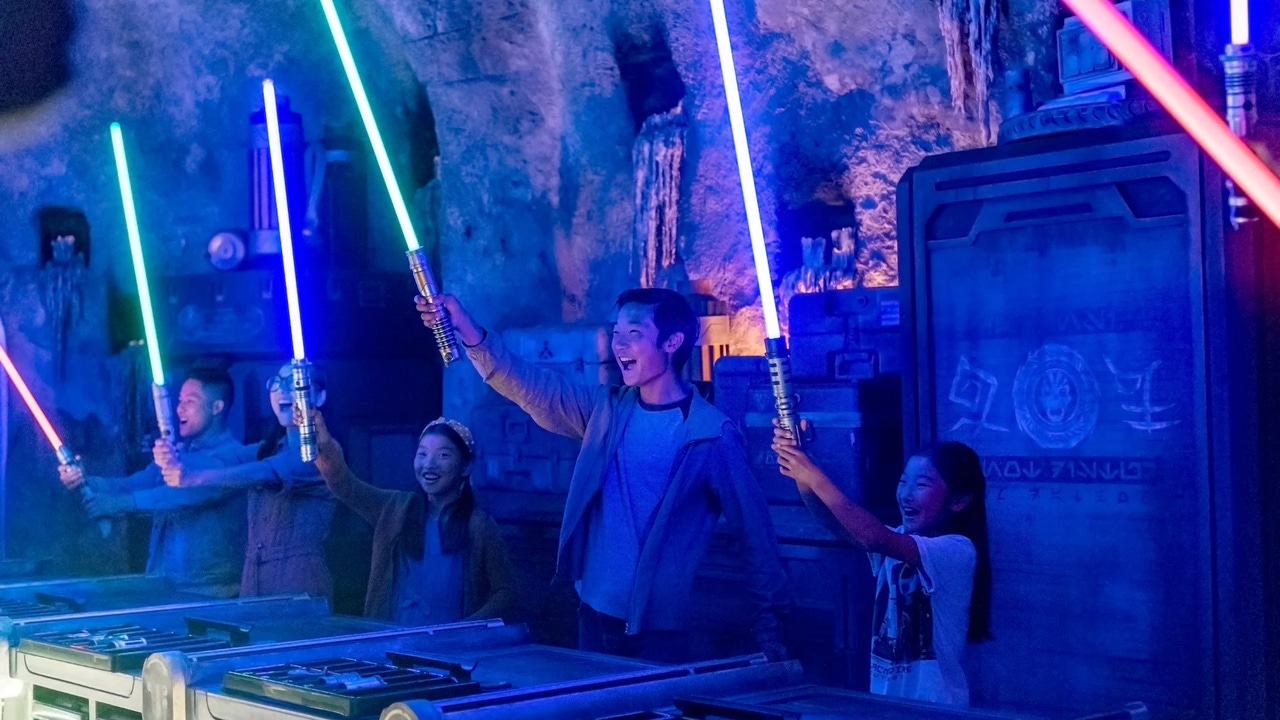Trending
Opinion: How will Project 2025 impact game developers?
The Heritage Foundation's manifesto for the possible next administration could do great harm to many, including large portions of the game development community.
Like many LARPers before them, Disney's Imagineers have transplanted role-playing game mechanics into the real world setting of Star Wars Galaxy's Edge. Here's a breakdown of what they did.

When Disneyland & Disneyworld guests wander into the back end of the park, they have the opportunity to leave the wonderful world of Walt Disney behind and take a tour of a galaxy far far away--or, a small slice of it at least. At Galaxy's Edge, park guests wander into the world of Black Spire Outpost on the planet Batuu, in an experience that recreates the world of Star Wars as defined by the new trilogy of films created by Disney.
At GDC 2020, Walt Disney Imagineering assistant producer Anisha Deshmane took some time to tell how the company turned Galaxy's Edge not just into a tourist destination, but a storytelling opportunity using the mobile phones that guests bring into the park every day. It turns out that many mechanics used in role-playing games work equally well in real-life (something any dedicated LARPer is probably already aware of).
Like any well-designed RPG, the Galaxy's Edge Imagineers needed a unique setting to attract 'players' when they set out. Star Wars means something different to every guest who comes through the park, and planets from the films like Tatooine or Jakku are better aligned with the stories of the movies' heroes, rather than individual guests who come with other baggage. Deshmane said the goal was to create a setting where guests could "live their own personal version of Star Wars, no matter how new of a fan they are, or how dedicated of a fan they are."
To that end, a visit to Galaxy's Edge is bolstered by a number of role-playing game mechanics that might be at home in Dragon Age or World of Warcraft. Deshmane joked that park visitors might begin to feel like unique characters after their time at the park, what with the customizable outfits and (pricey) merchandise they can acquire.
Several of these mechanics are executed by way of a "Datapad" component to the Disney Play app, that the Imagineering Team used to build narratives that can't be expressed through the park's architecture or lifelike animatronics. There's an interesting real-life behavior that Deshmane says the team was able to map onto— travelers, especially Disney tourists—are used to using their phones to explore a foreign country. That makes the Datapad app a natural hotspot for hosting interaction mechanics for the park.
The Datapad app has four key functions that interact with over 250 markers in the park. Droids and circuits can be hacked to trigger physical responses from Droids and ships, crates can be scanned, signals can be scanned, and signs written in Aurabesh can be translated.
"We've seen guests who've learned Aurabesh just from the app," Deshmane said. The tool even works outside of the park, letting players translate some text in Respawn's Star Wars: Jedi Fallen Order.
The app also allows Disney Imagineering to merge the art direction of the park with narrative context. Deshmane pointed out a subtle detail in the park's design that only some guests might notice--a stairwell pockmarked by blaster scorch marks. A guest not using their phone who saw the marks might form their own story about what took place on the stairs, guests who use the app's scanning features can discover local gossip that tells the "true" story.
The app's tools even have a mild difficulty curve—they're accompanied by some minigames that may be familiar to the hacking systems of Mass Effect and BioShock, and higher-level story moments are able to rely on guests' being skilled enough to tackle more difficult puzzles. These mechanics also interact with a series of quests that let players align themselves to Black Spire Outpost's different factions using a reputation system like those from World of Warcraft.
A bonus effect for these quests—they send players physically around the park, helping keep foot traffic flowing and leading them to more physical attractions. Deshmane also discussed how the app keeps players entertained while waiting in line for rides like Millenium Falcon: Smuggler's Run, alleviating the normal boredom of waiting in an hour-long line. How players perform in Smuggler's Run and can be tracked, and sent to some cast members and animatronic actors who can offer unique responses to players based on their prior performance, much like how RPG characters in digital and tabletop settings.
Star Wars: Galaxy's Edge isn't the first real-life location to borrow from the world of role-playing game mechanics, but it's a neat exploration of how seemingly niche tools can be used to expand the experience of guests who are different kinds of Star Wars fans, from the newcomer to the lore-quoting veteran.
Since I was able to check out Galaxy's Edge before COVID-19 swept across the nation, and compare it to the usual Disney experience, one of Deshmane's quotes stood out for me, since it sums up how drastically different the park's design is once you step onto Batuu. (You can even contrast it to the longstanding Star Tours ride to see how this philosophy holds up). "We really think of the land itself as an attraction," she said. "This is where guests are spending most of their time, we know they love Star Wars for different reasons.
"Instead of seeing them as visitors to the land and telling them what to do, we see them as explorers on a new planet, and want to provide them the opportunity to become part of whatever stories pique their interest."
Read more about:
event-gdcYou May Also Like